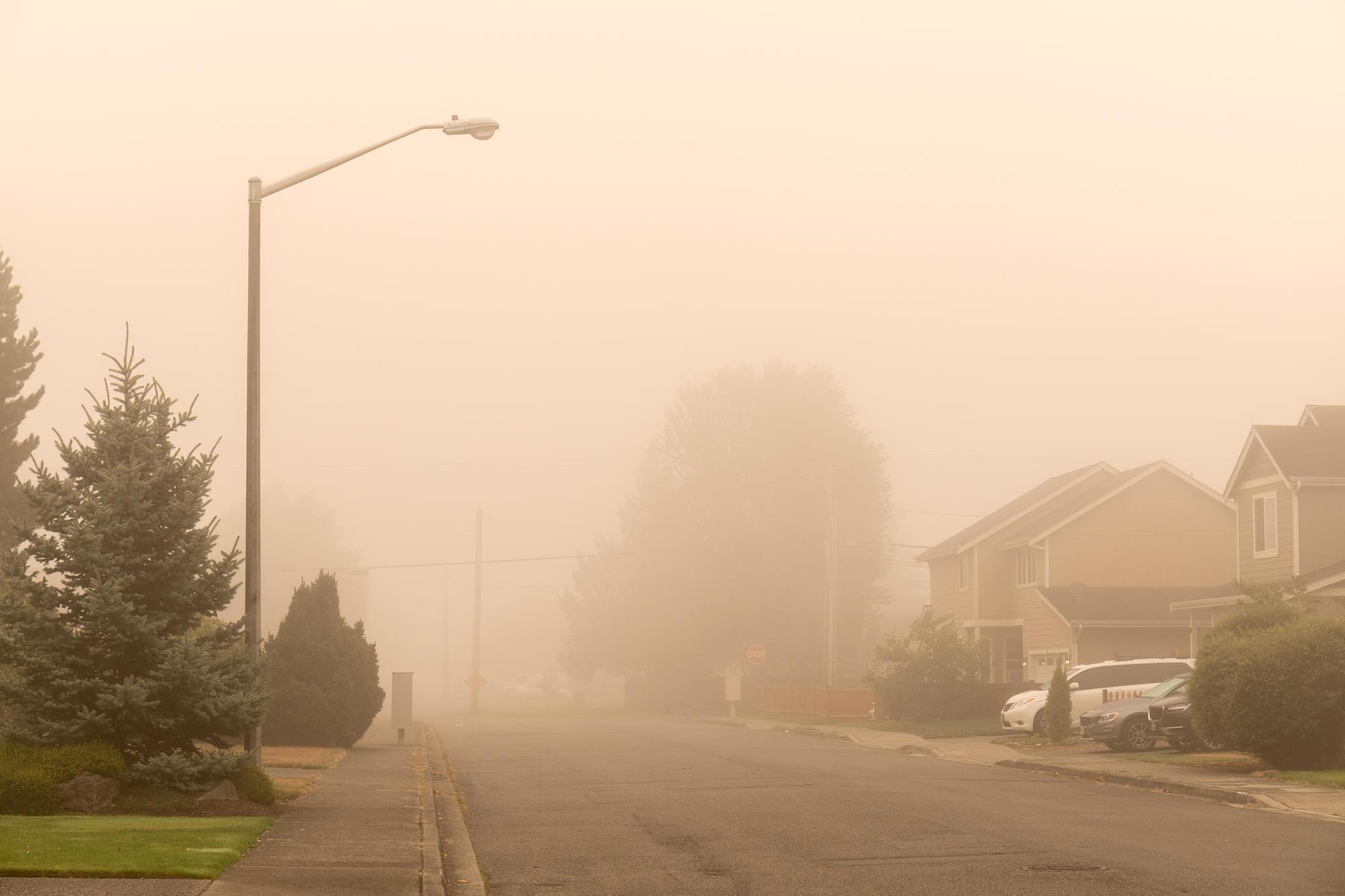A longtime friend and his family were visiting us this week. I had been looking forward to this for years. The trip was originally foiled by Covid, but finally got back on the books for this summer. As August rolled around and the date approached, I started scheming on things to do, places to go, ways to wow my friends (and hopefully entice them to return for future visits!) They were coming all the way from D.C., so this was my chance to really impress my city-dwelling friends with the natural beauty of the Gorge. And this was their chance to experience the glorious outdoors, except that they arrived this past Sunday – and so did the smoke.
“I swear, one of the largest rivers in the country is right there!” I told them, pointing to the north and a wall of smokey haze.
“And Mt. Hood is right there,” I said, pointing southward, towards more grey smoke. “And then back that way,” north again, “is Mt. Adams, which is actually taller than Mt. Hood, but doesn’t get nearly the attention…” I was trying so hard to do what I love most; to share my excitement about the Gorge, but damn if the smoke wasn’t cramping my tour-guide goals.
Of course, levity-aside, I remember what it was like when Eagle Creek was on fire. When local residents, businesses, friends suddenly found their lives uprooted, for some, in ways from which they’d never quite fully recover. I remember a fellow mom and I trying to figure out how to get our kids to some fresh air – for their little lungs and our sanity. I remember wondering what a conundrum it must be for our farmers and orchardists who needed to harvest and had no choice, but to be outdoors. And since our Wildfire talk in Season 13 of Sense of Place, there isn’t a fire that doesn’t conjure the face of Loretta Duke and her fellow wildland firefighters; people who don’t have the luxury of trying to get away from smoke and fire, but must run to it.
For anyone living in the Northwest (though increasingly, anywhere) smoke from wildfires is becoming a regular part of our lives. In the past few years, I’ve noticed a shift in how people approach the summer “yeah, we might go to X in August, if the smoke isn’t too bad.”
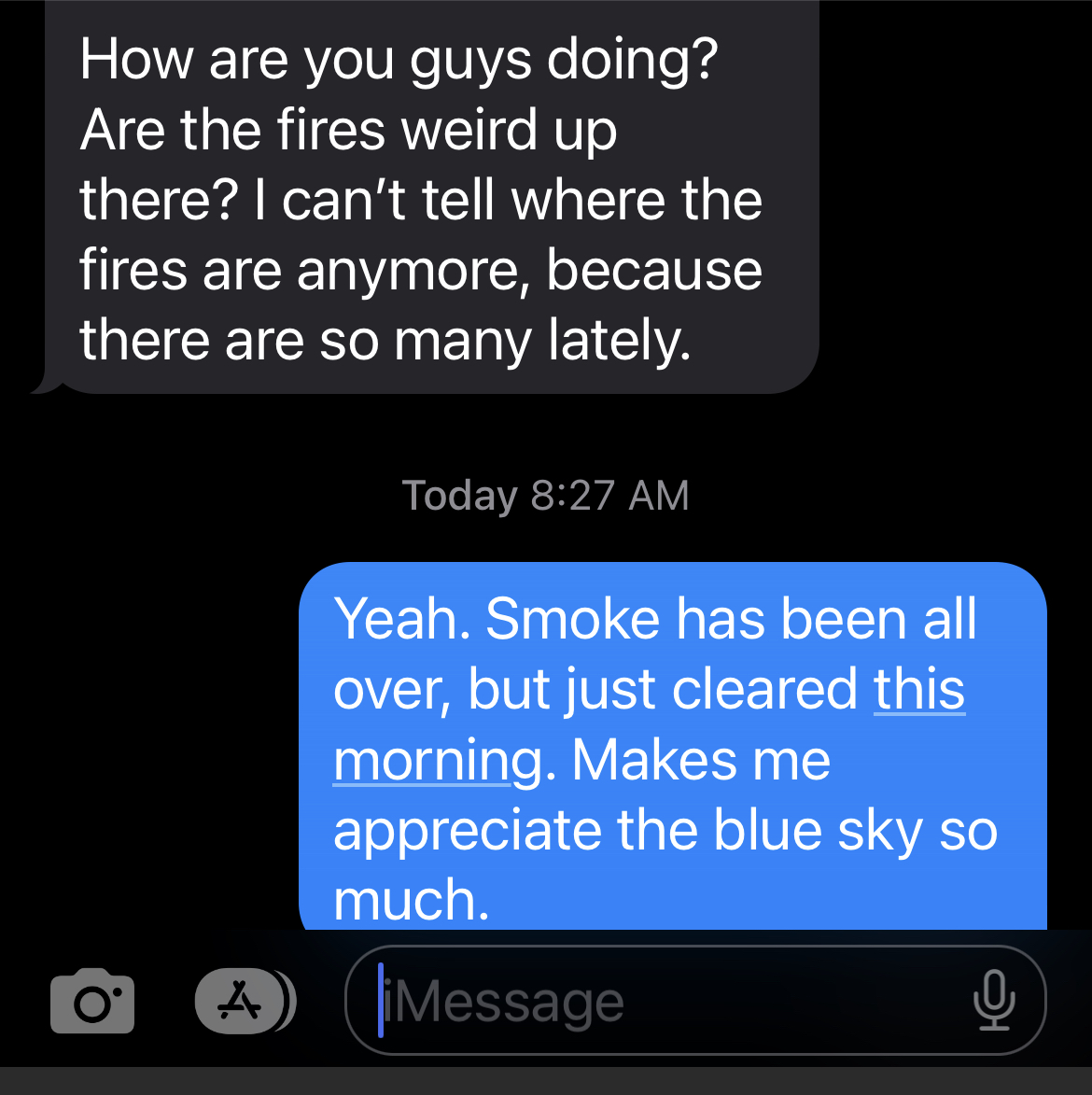
In so many subtle and not-so-subtle ways families, professionals, everyone, is adjusting their lives in order to live with wildfire smoke. And when my friends arrived, we did the same. First, by taking a look at the AQI.
“A, Q what?” My friend asked.
“Air Quality Index” I responded.
I said this as if I was well-informed, but let’s be honest, I’m just learning this, too. Mostly, I keep hearing about it from friends. People who previously seemed obsessed only with weather reports, now also check apps like AirNow to assess whether it’s an okay time to be outdoors.
All this can feel heavy, and it is – within hours of arriving, my daughter and my friend’s son were debating whether it was smoke or smog in the skies. Not the topic you expect from two 8-year old kids. But I learned something during last season’s Sense of Place. In the lead up to our wildfire presentation I went on the radio with one of our speakers, Jessica Hudec. As per usual, I was just the window-dressing for someone with incredible expertise. As Jessica shared firsthand insights about wildfire, I was as enthralled as anyone.
Then, immediately following the show, I received a message from Lauren Kraemer at OSU Extension Service (a program featured in SOP Season 12!) They were just beginning work on a community response plan for wildfire smoke in the Gorge. There was an upcoming community-listening session and more than that, something called the Gorge Smoke Sensor Project was underway. A collaboration of multiple partners, funded by grants from the Knight Cancer Institute and Oregon Department of Environmental Quality.
Lauren shared that twenty-five new smoke sensors are being installed at sites across the Gorge, including schools, orchards, and other local community organizations. Eventually, these will help us all track and respond to changes in AQI here in the Gorge and protect our health when the smoke rolls in. We can see data from these smoke sensors check HERE and HERE. A new website is in the works that will combine all of our region’s smoke information into one place (when Lauren tells us it’s live, we’ll tell folks about it via our Sense of Place social channels).
Thanks in part to these sensors and to the work of Lauren and her many partners, now, months later, I am able to check our local AQI and plan for my friend’s visit. Lauren reminded me that while I couldn’t control the air outdoors, there were things I could do to clean it up indoors. In fact, her own DIY set-up had improved her indoor air-quality from an unhealthy level 160 to a level 28 in just over an hour!
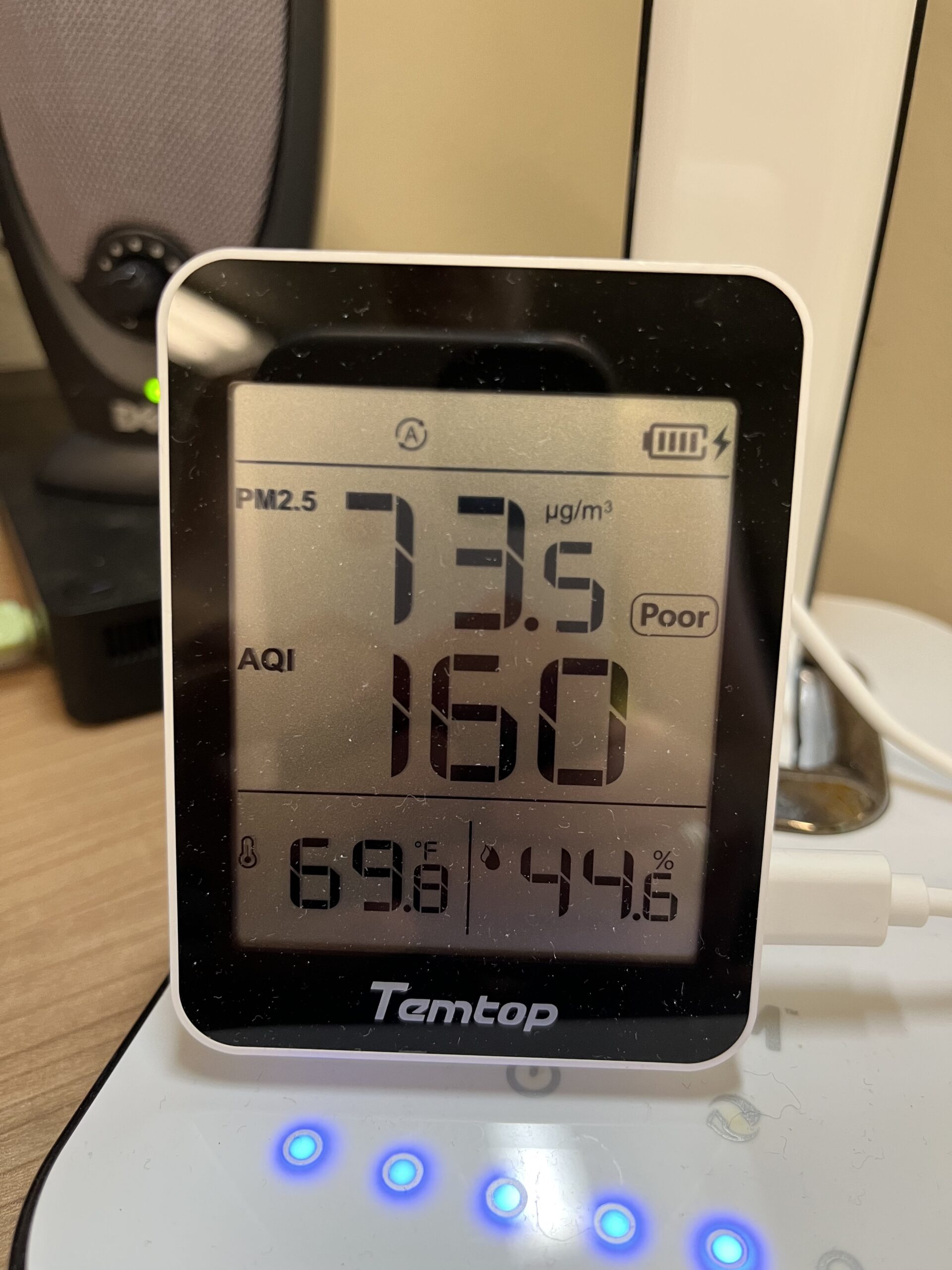
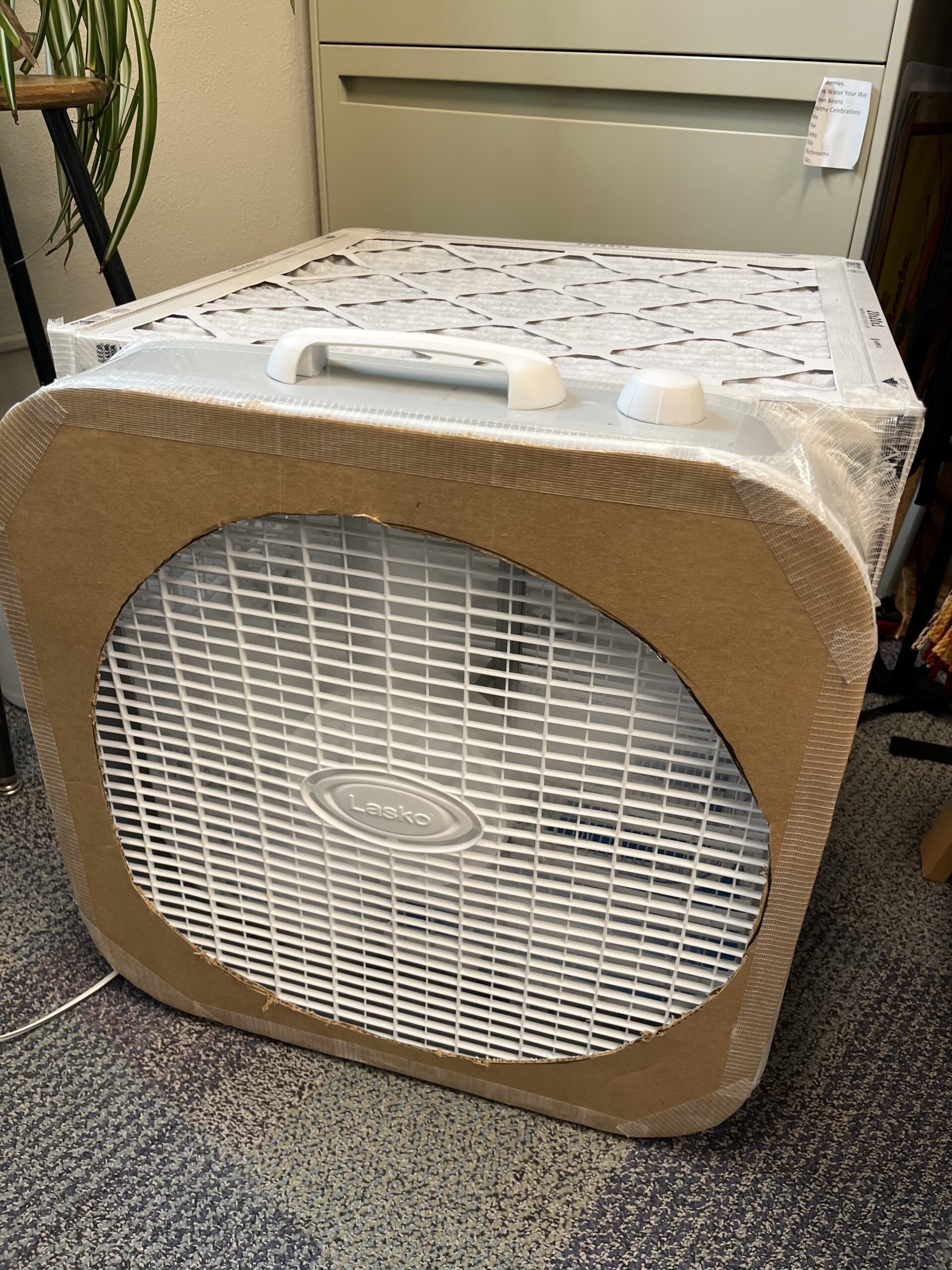
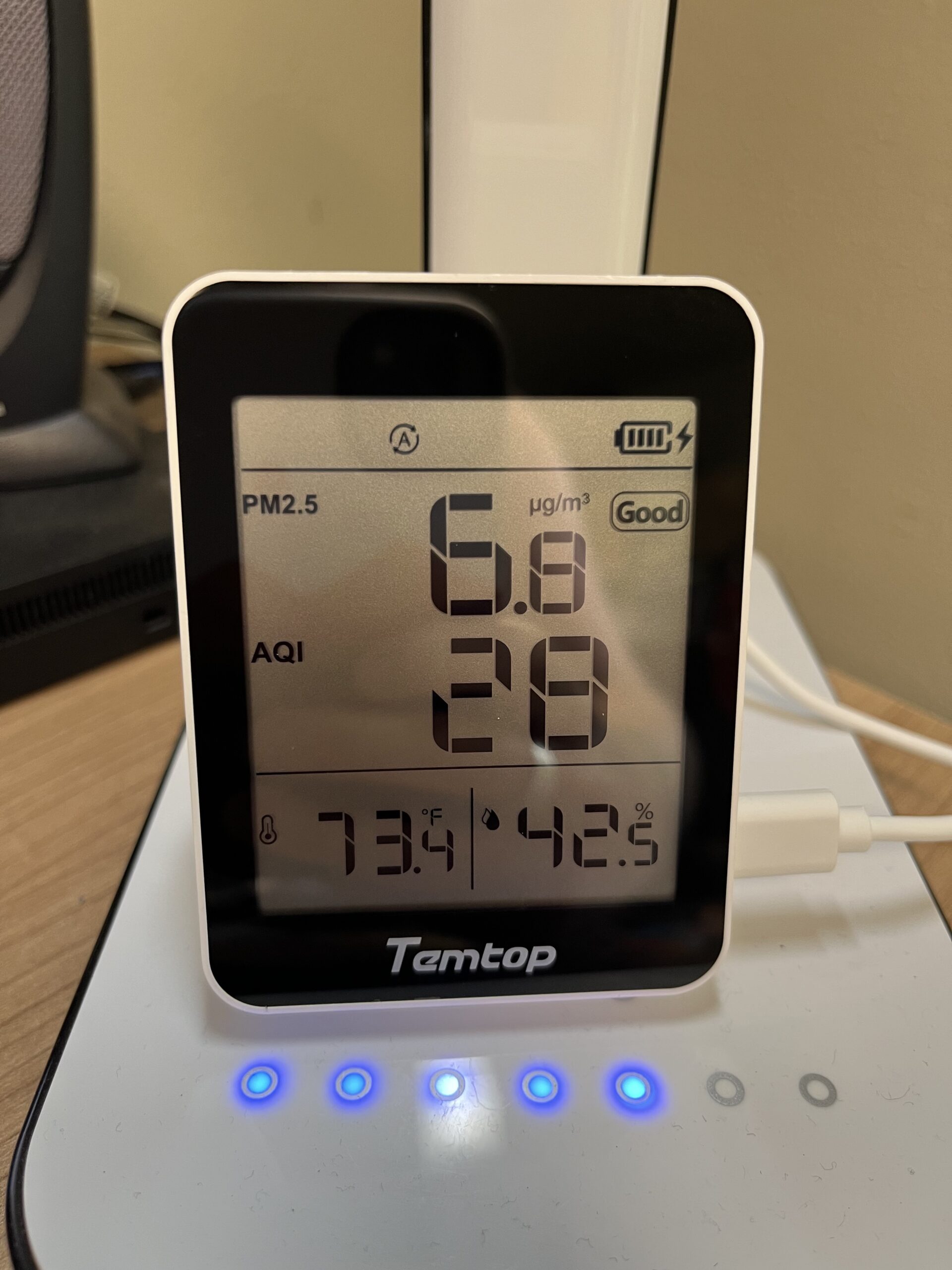
On the last day of my friends’ visit, we finally woke up to blue skies. What a gift after days of brown-grey air. There, there is Mt. Adams…there is the Columbia…there is Mt. Hood, and here is this place that I know will continue to have wildfires and smoke – but I also know is full of people like Loretta, Jessica, and Lauren. People who fight fires and set up sensors and care so deeply about this place I call home.
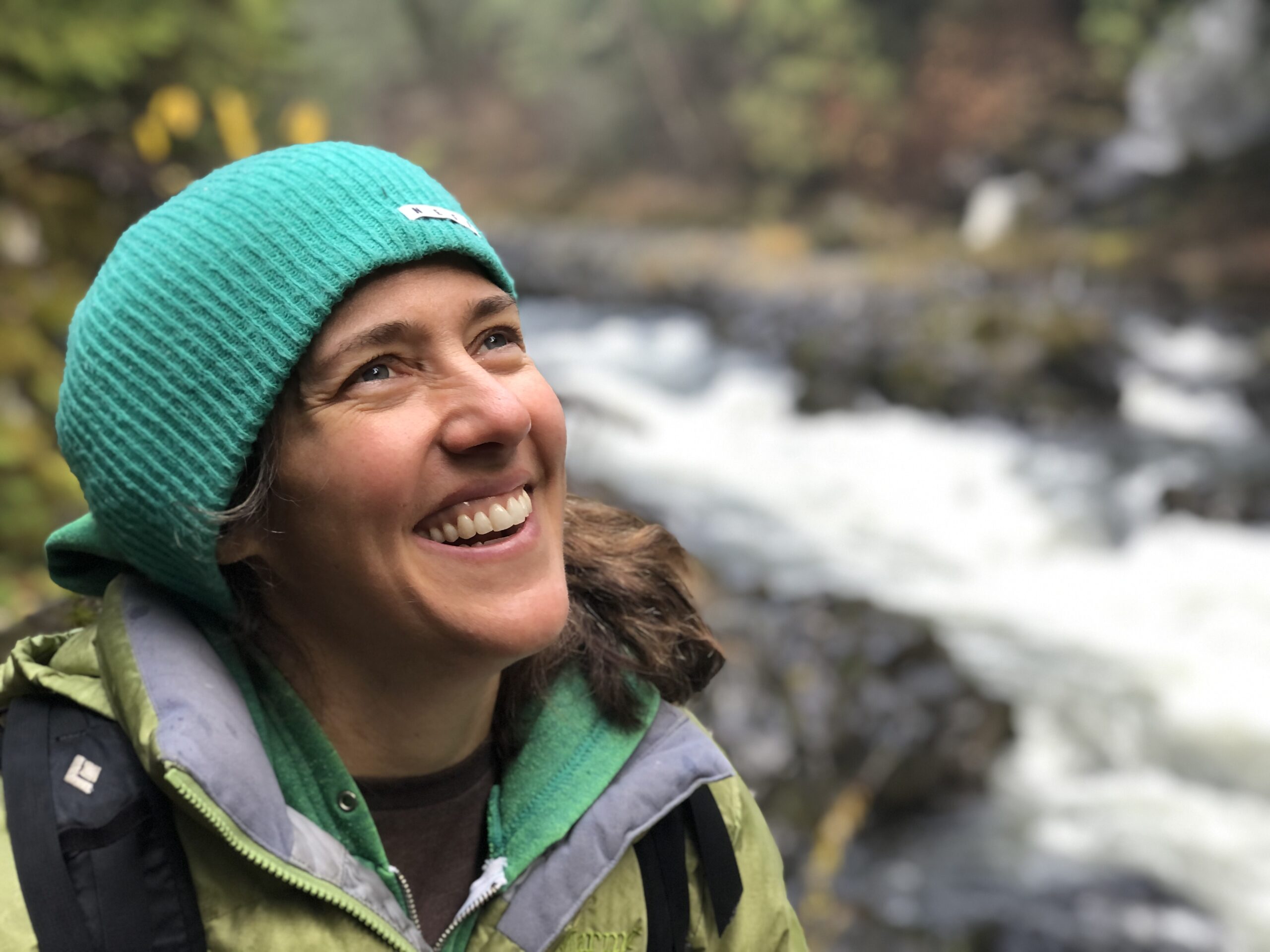
Sarah Fox is the host & curator of the Sense of Place series in the Columbia River Gorge.
Useful links:
Protecting Indoor Air from Wildfire Smoke (English & Español)
How to Make Your Own Clean Air Fan (WA Dept. of Ecology)
Frequently Asked Questions About Wildfire Smoke and Public Health (OR Health Authority)

